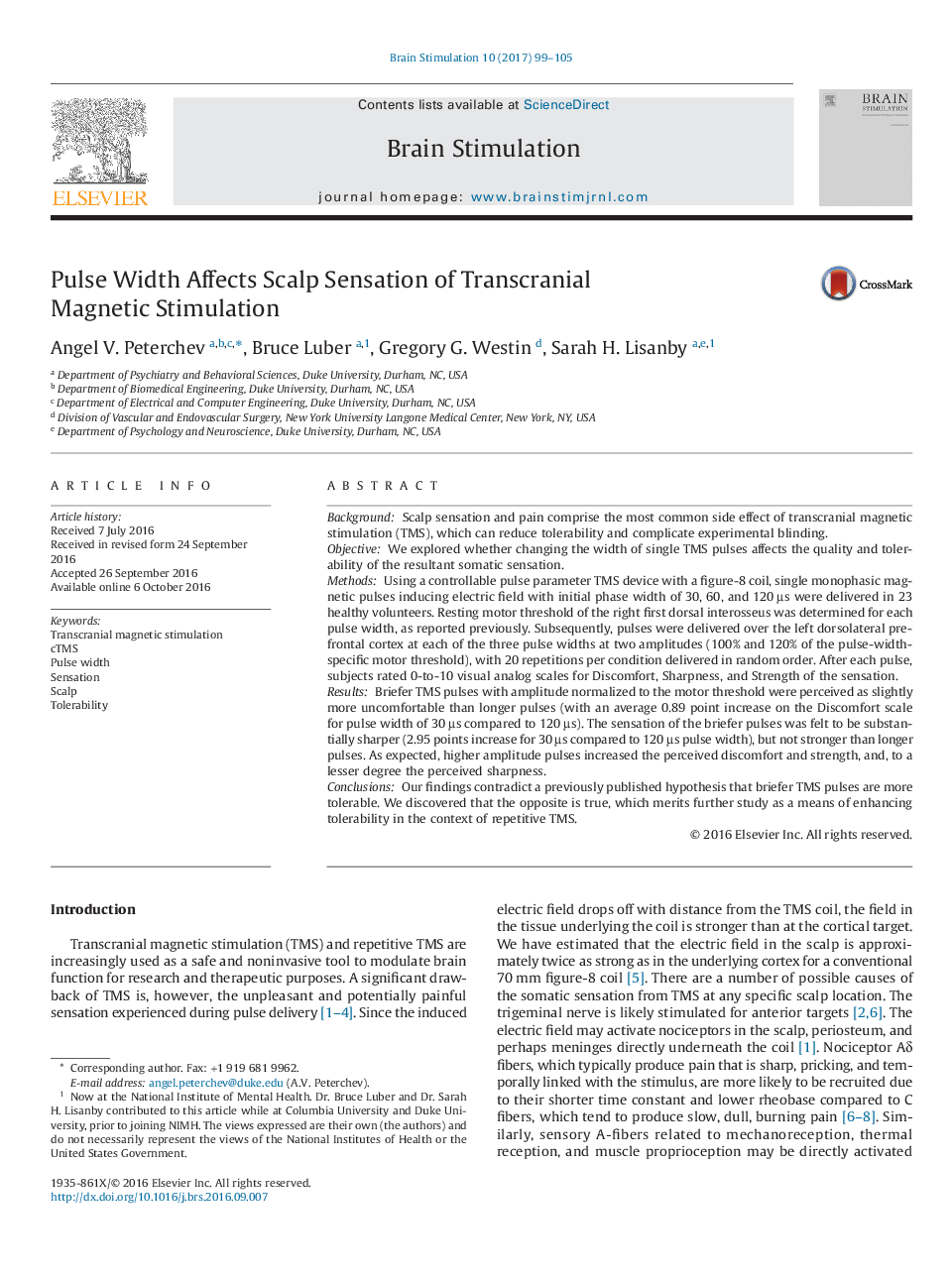| کد مقاله | کد نشریه | سال انتشار | مقاله انگلیسی | نسخه تمام متن |
|---|---|---|---|---|
| 5626603 | 1406325 | 2017 | 7 صفحه PDF | دانلود رایگان |

- Effect of pulse width on scalp sensation was studied with cTMS.
- Briefer TMS pulses are slightly more uncomfortable than longer pulses.
- Briefer TMS pulses are felt as substantially sharper than longer pulses.
- TMS pulse width does not affect significantly perceived strength of stimulation.
- Higher TMS pulse amplitude increases perceived discomfort, strength, and sharpness.
BackgroundScalp sensation and pain comprise the most common side effect of transcranial magnetic stimulation (TMS), which can reduce tolerability and complicate experimental blinding.ObjectiveWe explored whether changing the width of single TMS pulses affects the quality and tolerability of the resultant somatic sensation.MethodsUsing a controllable pulse parameter TMS device with a figure-8 coil, single monophasic magnetic pulses inducing electric field with initial phase width of 30, 60, and 120âµs were delivered in 23 healthy volunteers. Resting motor threshold of the right first dorsal interosseus was determined for each pulse width, as reported previously. Subsequently, pulses were delivered over the left dorsolateral prefrontal cortex at each of the three pulse widths at two amplitudes (100% and 120% of the pulse-width-specific motor threshold), with 20 repetitions per condition delivered in random order. After each pulse, subjects rated 0-to-10 visual analog scales for Discomfort, Sharpness, and Strength of the sensation.ResultsBriefer TMS pulses with amplitude normalized to the motor threshold were perceived as slightly more uncomfortable than longer pulses (with an average 0.89 point increase on the Discomfort scale for pulse width of 30âµs compared to 120âµs). The sensation of the briefer pulses was felt to be substantially sharper (2.95 points increase for 30âµs compared to 120âµs pulse width), but not stronger than longer pulses. As expected, higher amplitude pulses increased the perceived discomfort and strength, and, to a lesser degree the perceived sharpness.ConclusionsOur findings contradict a previously published hypothesis that briefer TMS pulses are more tolerable. We discovered that the opposite is true, which merits further study as a means of enhancing tolerability in the context of repetitive TMS.
Journal: Brain Stimulation - Volume 10, Issue 1, JanuaryâFebruary 2017, Pages 99-105